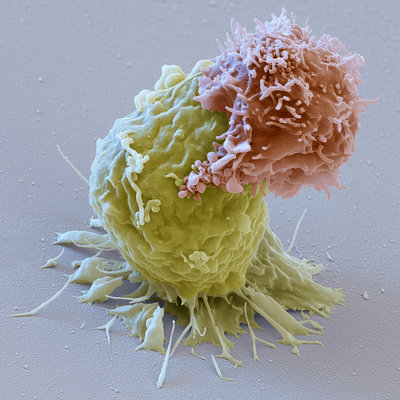Chronic Lymphocytic Leukemia is the most common form of leukemia found in adults in the Western World. Chronic Lymphocytic Leukemia can be asymptomatic for prolonged periods of time. It’s initial symptoms include lymph node enlargement and anemia. Progression of the disease can lead to bone marrow impairment, a decline in serum immunoglobulins; and an increased susceptibility to infections. Long term complications can include immune suppression, bone marrow failure, autoimmune diseases and secondary malignancies and cancers. In some instances of the disease, it progresses rapidly; and in other instances it doesn’t progress rapidly at all. Treatments for Chronic Lymphocytic Leukemia involve trying to decrease leukemic cell growth and increase leukemic cell death. Chronic Lymphocytic Leukemia (CLL) patients that possess a deletion on Chromosome 17 have a lower survival rate than other CLL patients.
CLL patients have approved antibody therapies available to them. The antibodies in the therapies are directed against the CD20 antigen of CLL. Antibodies that are used to recognize the CD20 antigen are Rituximab and Ofatimunab. Two different types of bone marrow transplant techniques are also available. The patient may have his bone marrow cells removed, get treated for the CLL; and then have his bone marrow cells back. This is called an autotransplant. An allotransplant is when you have your bone marrow cells removed, get treated for the CLL, and then have a compatible bone marrow donor give you new bone marrow cells. This may be preferable because the new bone marrow cells will be better at recognizing the remnant leukemia cells and then killing them. There are drawbacks to having an allotransplant however. The donor bone marrow cells may produce antibodies that attack other cells of the recipient. In any event, research in treating CLL patients is presently ongoing and the prognosis of a CLL patient newly diagnosed is looking brighter.














































